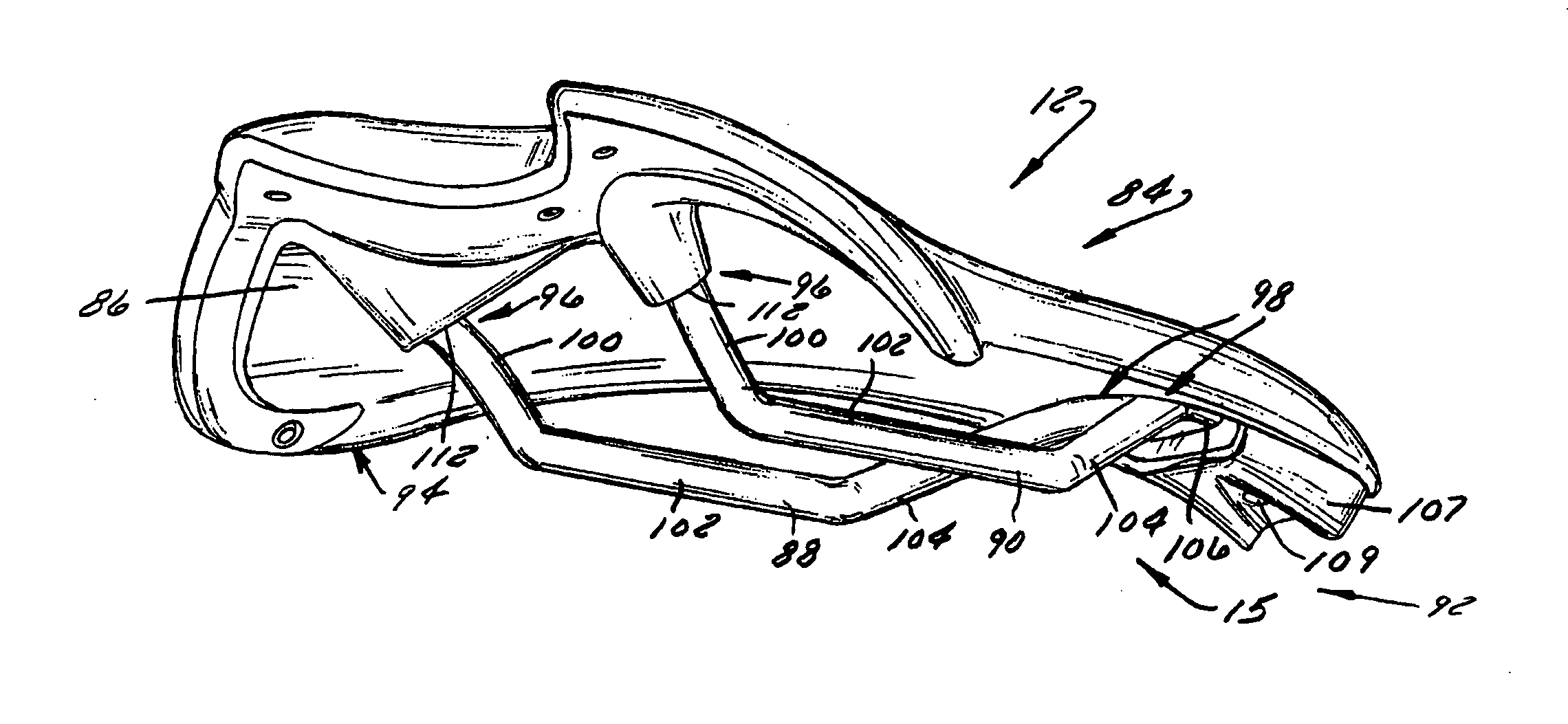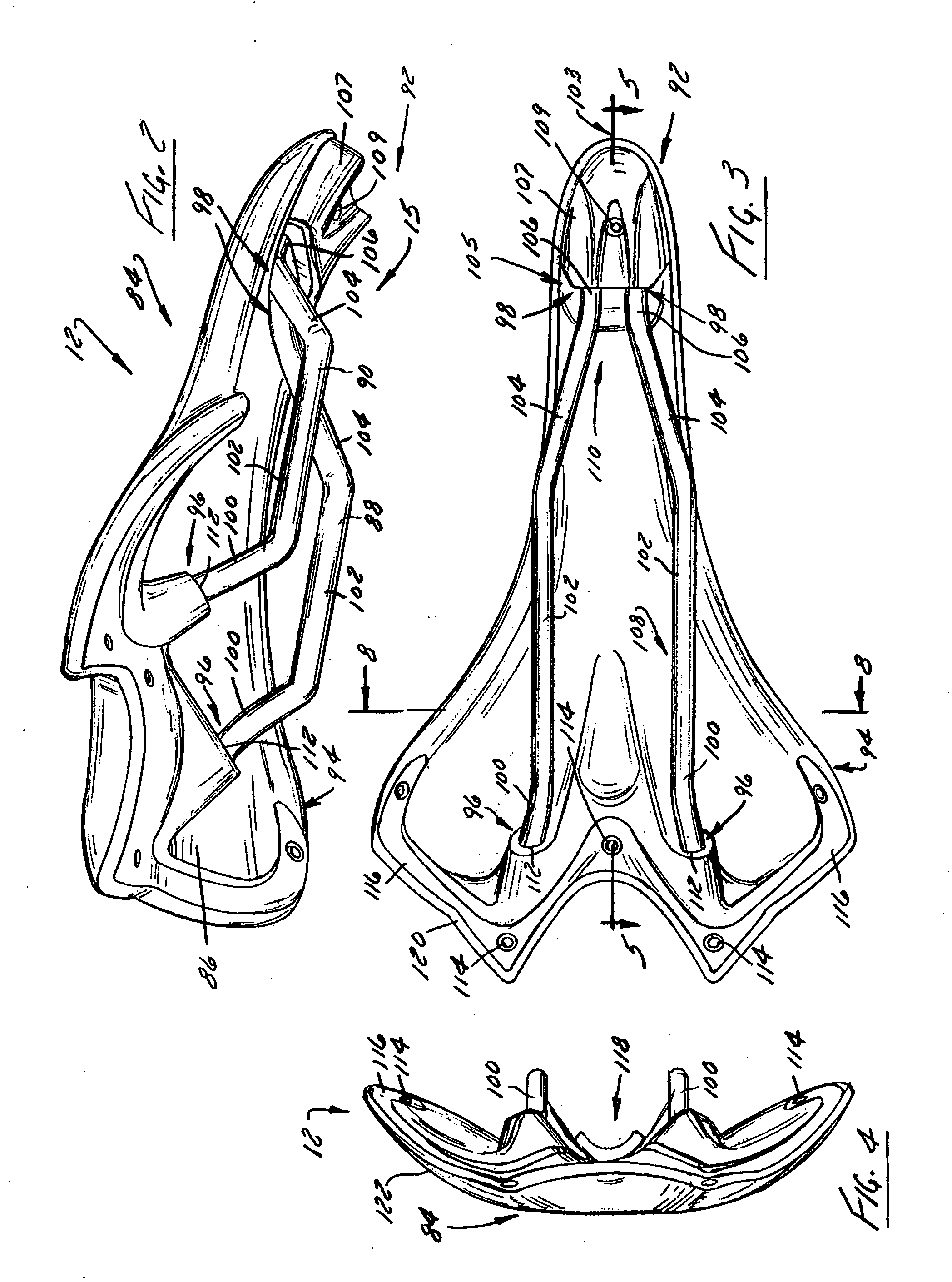Bicycle seat system
a seat system and bicycle technology, applied in the field of bicycle seats, can solve the problems of increasing the pressure of the rider, increasing the discomfort of the rider, and limiting so as to reduce the friction associated with the engagement and limit the interaction of tangential force
- Summary
- Abstract
- Description
- Claims
- Application Information
AI Technical Summary
Benefits of technology
Problems solved by technology
Method used
Image
Examples
Embodiment Construction
[0025]FIG. 1 shows a bicycle 10 equipped with a seat 12 constructed in accordance with the seat system of the present invention. Bicycle 10 includes a frame 13 to which seat 12 and handlebars 16 are attached. A seat clamp 14 is engaged with an underside 15 of seat 12 and cooperates with a seat post 20 that slidably engages a seat tube 22 of frame 13. A top tube 24 and a down tube 26 extend forwardly from seat tube 22 to a head tube 28 of frame 13. Handlebars 16 are connected to a steerer tube 30 that passes through head tube 28 and engages a fork crown 32. A pair of forks 34, 35 extend from generally opposite ends of fork crown 32 and are constructed to support a front wheel assembly 36 at an end thereof or fork tip 38. Fork tips 38 engage generally opposite sides of an axle 40 that is constructed to engage a hub 42 of front wheel assembly 36. A number of spokes 44 extend from hub 42 to a rim 46 of front wheel assembly 36. A tire 48 is engaged with rim 46 such that rotation of tire ...
PUM
 Login to View More
Login to View More Abstract
Description
Claims
Application Information
 Login to View More
Login to View More - R&D
- Intellectual Property
- Life Sciences
- Materials
- Tech Scout
- Unparalleled Data Quality
- Higher Quality Content
- 60% Fewer Hallucinations
Browse by: Latest US Patents, China's latest patents, Technical Efficacy Thesaurus, Application Domain, Technology Topic, Popular Technical Reports.
© 2025 PatSnap. All rights reserved.Legal|Privacy policy|Modern Slavery Act Transparency Statement|Sitemap|About US| Contact US: help@patsnap.com



